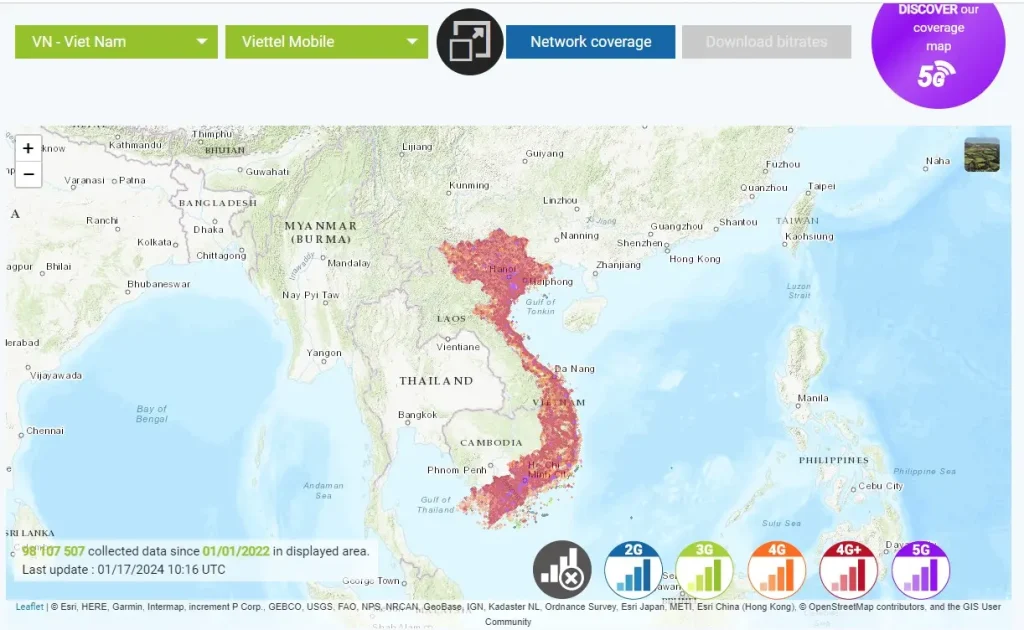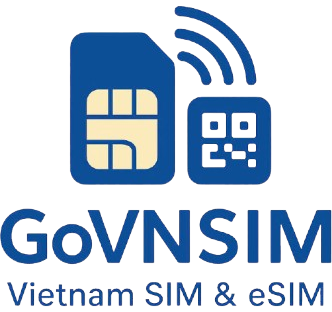Real Speed Test Viettel eSIM (2025): Actual Numbers & How to Measure Yours in Vietnam
Searching for real speed test Viettel eSIM? You’re not alone. Travelers, expats, and remote workers want honest numbers — not marketing promises. This updated 2025 guide summarizes verified public data from reliable Vietnamese sources and walks you through how to reproduce a clean, repeatable test yourself.
Service note: GoVnSIM’s Viettel eSIM is data-only and does not include a phone number or SMS/OTP. If you need local OTPs for Grab, ZaloPay, or banking, use a plan with number such as MobiFone eSIM.
📊 Why a “Real Speed Test Viettel eSIM” Matters in 2025

Vietnam’s mobile networks have improved rapidly. According to i-Speed (Vietnam Internet Center, VNNIC), the country reached an average of ~75.19 Mb/s in Q2/2025 — with Viettel leading at ~83.6 Mb/s. That’s a major jump from 2024 (~54 Mb/s). For travelers, this means reliable cloud access, video calls, and content uploads across most regions.
- Viettel average (Q2/2025): ~83.6 Mb/s download (source: i-Speed / national press)
- Vietnam average (Q2/2025): ~75.19 Mb/s
- Da Nang field tests: peaks over 150 Mb/s on strong 4G/LTE lines
🌍 Viettel eSIM Speed by Region (Indicative Averages)
| Region / City | Download (Mb/s) | Upload (Mb/s) | Latency (ms) | Notes |
|---|---|---|---|---|
| National average | ~75 | 20–30 | 20–35 | All carriers; Viettel slightly above mean |
| Hanoi | 60–110 | 20–35 | 20–35 | Strong 5G downtown, rush-hour dips |
| Ho Chi Minh City | 70–120 | 20–35 | 18–30 | Excellent in open areas; high-rise interiors vary |
| Da Nang | 90–150+ | 25–40 | 18–28 | Coastal, line-of-sight speeds; 150+ Mb/s observed |
| Nha Trang / Quy Nhon | 70–120 | 20–35 | 20–35 | Consistent seaside coverage |
| Ha Giang / Sapa | 20–60 | 10–20 | 30–50 | Terrain impact; best on high floors or outdoors |
| Mekong Delta (rural) | 30–80 | 15–25 | 25–45 | Morning speeds stronger than evening |
🧭 How to Run a Real Speed Test Viettel eSIM
- Activate your Viettel eSIM from GoVnSIM over Wi-Fi by scanning the QR code sent to your email.
- Toggle Airplane Mode ON for 10 seconds, then OFF to refresh network registration.
- Lock to 4G/5G Auto; avoid 3G fallback in your settings.
- Close background sync apps (Photos, Drive, iCloud, Updates).
- Use Speedtest by Ookla or nPerf and select a nearby trusted server.
- Run three tests 60–90 seconds apart; average the results for consistency.
- Repeat later in the evening to observe network congestion differences.
Pro tip: For Zoom or Google Meet calls, tether your laptop via USB instead of hotspot. It reduces jitter and ensures higher sustained upload speed.
📶 What Affects Your Real Speed Test
- Signal strength: Bars and placement matter. Move near a window or balcony for better throughput.
- Network load: Tourist areas and rush hours can slow results by 20–60%.
- Hardware: Newer modems (Snapdragon 8-series, Apple A15+) sustain faster 5G aggregation.
- Server distance: Testing to far-away servers inflates latency.
- Background traffic: Pause backups, messaging auto-downloads, and updates.
- Undersea cables: Rare outages can reduce international speeds but not local cell performance.
📈 Viettel vs Other Carriers (2025 Snapshot)
| Carrier | Q2/2025 Avg (Mb/s) | Strengths | Considerations |
|---|---|---|---|
| Viettel | ~84 | Nationwide coverage; fast 4G, wide 5G rollout | Mountain routes vary; indoor walls may affect signal |
| VinaPhone | ~70–75 | High 5G peak speeds in cities | Less stable in rural provinces |
| MobiFone | ~50–55 | Good for OTP-enabled plans | 5G still expanding; mild congestion in hubs |
📍 Field Test Example – Da Nang, July 2025
Device: 5G-capable flagship, Mode: LTE/5G Auto, Line of sight to tower.
- 10:00 — 126 / 31 Mb/s (21 ms)
- 13:30 — 114 / 29 Mb/s (23 ms)
- 19:45 — 92 / 24 Mb/s (27 ms)
Evening drops show normal congestion, not faults. Under ideal signal, 150+ Mb/s LTE has been recorded in Da Nang — consistent with Viettel’s strong coastal infrastructure.
⚡ Quick Wins to Improve Your Speed
- Restart before testing; clear background apps.
- Move near windows or outdoors for cleaner signal paths.
- Disable secondary SIM data during tests on dual-SIM phones.
- Use USB tethering for important calls instead of Wi-Fi hotspot.
- Run tests at different times (morning vs evening) to gauge consistency.
📦 Choosing the Right GoVnSIM Plan
Average speeds of 30–80 Mb/s are already sufficient for streaming, navigation, and remote work. Focus on data capacity and coverage stability:
- Short trips: Viettel eSIM 15 Days (5 GB/day – $13.50)
- Longer stays: Viettel eSIM 30 Days (5 GB/day – $18.90)
- Need OTP/SMS? Pick a MobiFone eSIM with number for added convenience.
For travelers heading to mountainous or less-connected regions, the Viettel eSIM for Tourists ensures the most stable coverage and high-speed access across Vietnam.
📣 Plan Your Connectivity
Ready to measure your own results? Order your Viettel eSIM, scan the QR, and run a real speed test wherever you land — hotel, café, or co-working space. Stay informed, stay connected, and get reliable data from Vietnam’s top-performing network.
Support: WhatsApp +84 98 307 49 15 · LINE anyaxiaoying · Email info@govnsim.com
Part of Heera Travel Group – Explore more Vietnam tours at HeeraTravel.com.
